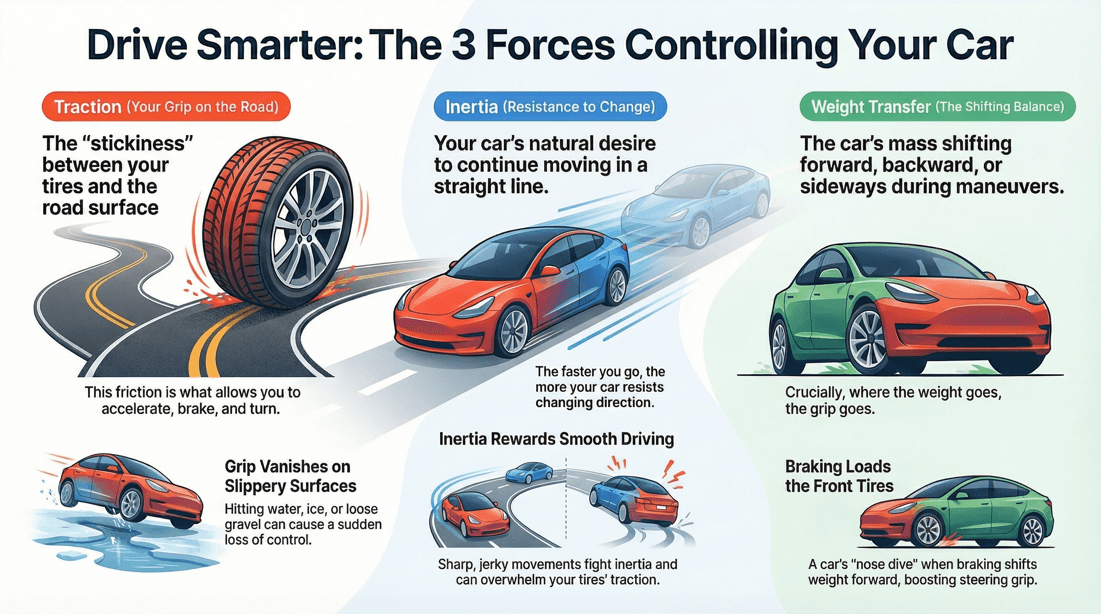Technical
⫸ Free YouTube Subscription
Every time you take the wheel, you’re not just navigating traffic, you’re managing powerful physical forces that determine how your car responds. From the moment you accelerate, brake, or turn, physics shapes every movement. Understanding these forces is key to becoming a safer, more confident driver. This page dives into the science of motion behind the wheel, offering a clear look at how speed, grip, momentum, and weight all affect your vehicle’s behavior in real-world conditions.
Why is it harder to stop on wet or icy roads? How does your speed influence the sharpness or safety of a turn? What role does tire grip play in maintaining control during sudden maneuvers? Why can momentum make quick lane changes dangerous? How does weight shift during braking or cornering affect vehicle stability? What physical forces cause a car to fishtail or lose traction?
This page provides an easy-to-understand guide to the physics of driving, focusing on how key principles like traction, inertia, and weight transfer impact your ability to stay safe. Rather than relying on complex formulas, it offers practical, real-life examples that help you apply these concepts directly to your driving. Whether you're navigating a curve, responding to changing road conditions, or trying to avoid a skid, the insights here will help you make better, faster, and safer decisions.
By learning how physics affects your car’s movement, you gain more than knowledge, you gain the power to stay in control. This page offers essential tools for drivers who want to improve their safety, sharpen their reactions, and drive with greater awareness on every journey.
This section also serves as a reference to clarify any of the terms that are used throughout the course.
⧋
🡄 Previous Page Next Page 🡆





